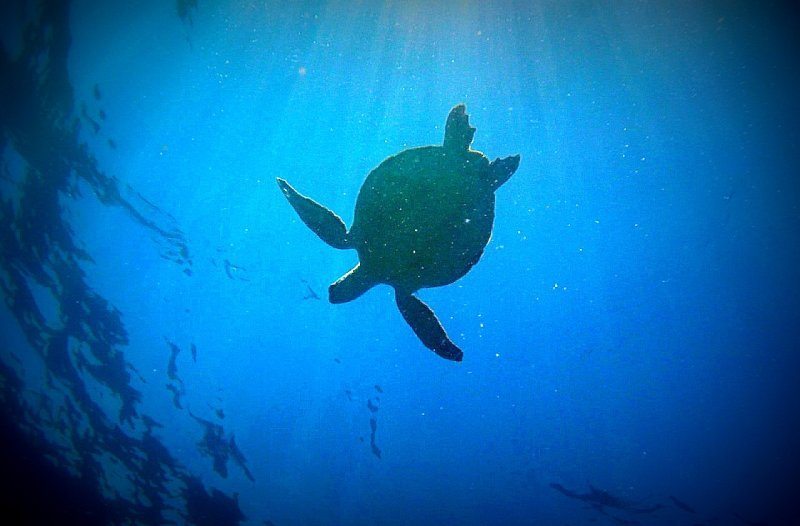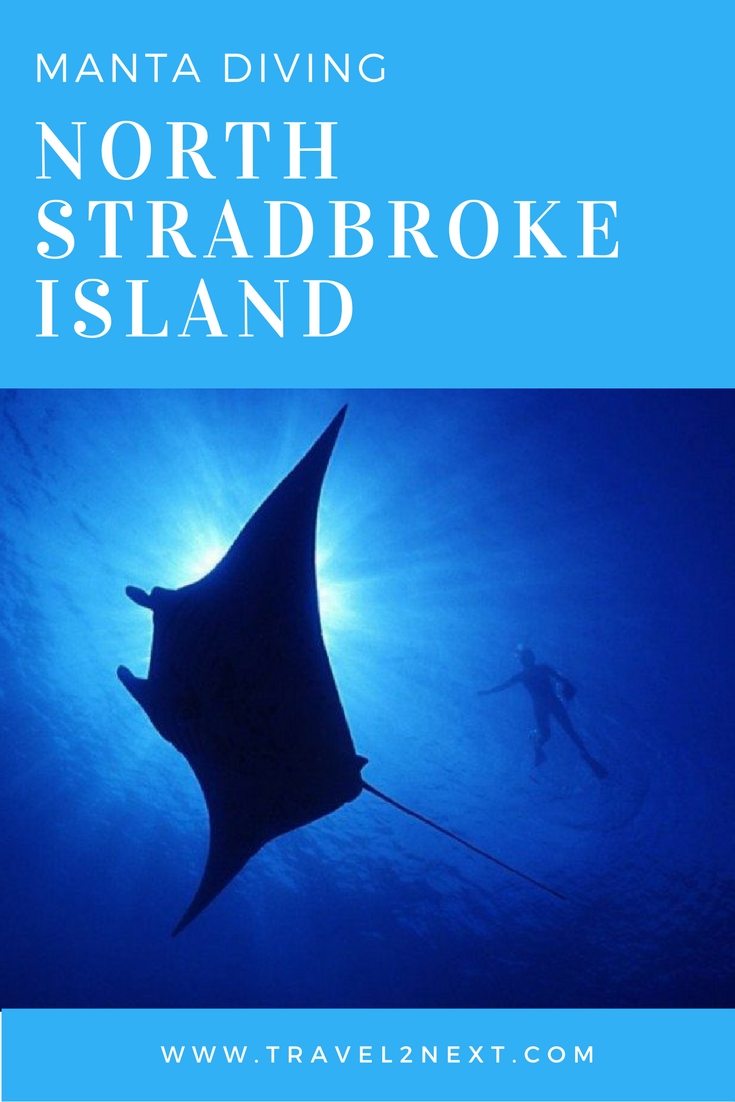I left the Sunshine Coast at dawn to join diving group Scuba Buddies Brisbane at the North Stradbroke Island ferry terminal. It was a perfect day and everyone was excited about the exceptional Stradbroke Island diving conditions.
Most of the best things to do on Stradbroke Island, such as fishing, swimming and surfing, involve water. The holiday crowds had gone home and this paradise was all ours for our Stradbroke Island diving adventure.
Contents
Stradbroke Island Diving
Manta Lodge
On Stradbroke Island, we were transferred from the passenger ferry terminal to the Manta Lodge and Scuba Centre.
We had come to the island hoping to film manta rays and had been encouraged by a dive a few weeks earlier in Byron Bay, where I had some close encounters.
Manta Lodge and Scuba Centre offer great value dives on Manta Ray Bommie. Dives can be done as a day trip from the mainland.
The cost of a double dive (including tanks, weights and the ferry crossing) is less than a double dive on the ex-HMAS Brisbane, which is a former Royal Australian Navy warship that was sunk off the Queensland coast to the north.
Related posts: 40 Things To Do in Queensland and all the best things to do on the Sunshine Coast.
Manta Ray Bommie
Manta Ray Bommie is part of a rocky reef community next to a sandy channel used by sharks, rays and other sea life.
The channel is used by marine life to enter and leave Moreton Bay, gateway to the river port of Brisbane.
It is peaceful at the top or bottom of a tide but the channel becomes a sandstorm as tidal flow picks up.
Divers must carry ‘safety sausages’ or surface marker buoys in case they get caught by the outgoing tide.
New Zealand is the first stop across the ditch!
Manta Ray Bommie is also near a corridor used by bull sharks and not far from Amity Point, where a young girl was badly mauled by several bull sharks while swimming in waist-deep water in January 2006.
It’s a fatality that should never have happened.
Drum lines, shark nets, Clever Buoy technology and the NSW-Qld shark control program is a blog for another day.
Beach boat launch
Our double dive off Manta Ray Bommie began with a tractor moving the dive boat from Manta Lodge to the north facing beach.
It is unusual in Australia to go on diving charters with a boat launch off a beach, although this method is the norm when diving in South Africa.
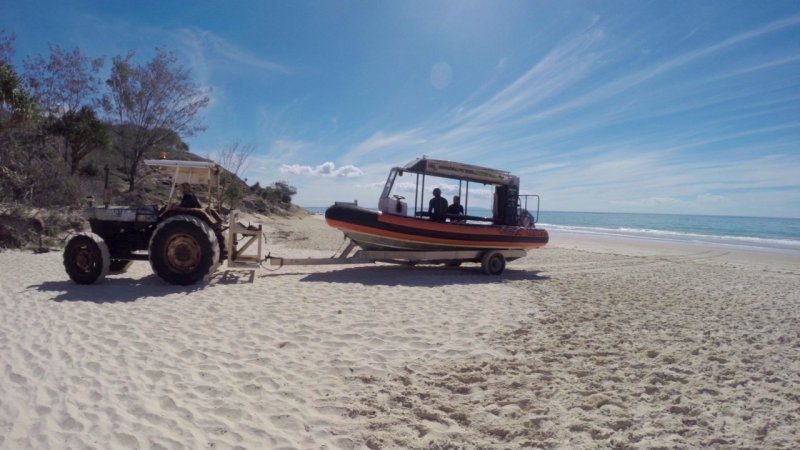
As a digital diver, I had my GoPro HERO 3+ Black edition mounted next to a GoPro HERO 2 (with a red filter and 2800 lumens of i-Torch Video Pro 4 led lights).
My diving buddy, Geoff Davey, and I were first to backward roll off the boat.
Geoff is a dive buddy I had met on Facebook and we were diving together for the first time.
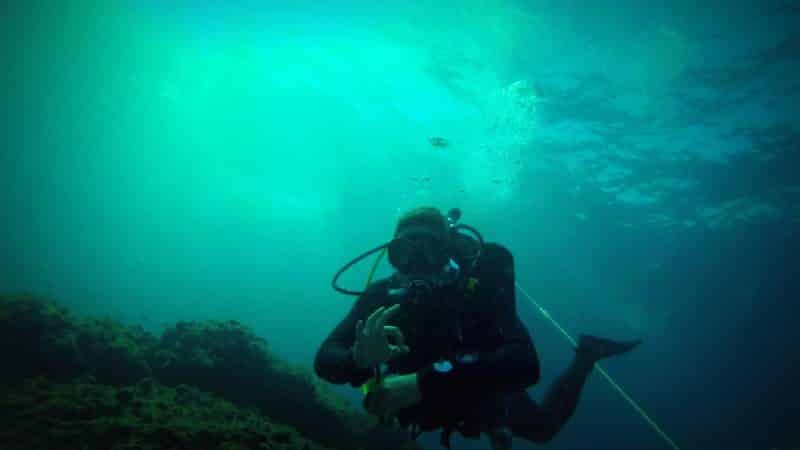
Divers who get buddied up with photographers and videographers draw a short straw in my opinion.
Undaunted by my constant need to stop and film, Geoff drifted effortlessly and was always nearby.
He smiled at me and so did the sand below.
I did a double take and realised there was a large flathead camouflaged in the sand peering up at us.
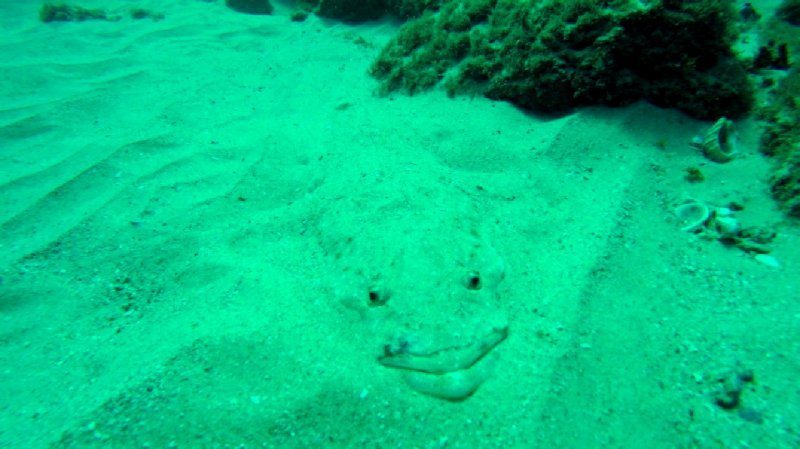
What we saw while diving Stradbroke Island
A parade of leopard sharks, wobbegong sharks, white-spotted shovelnose rays, bull rays, stingrays, stingarees, a big grouper, clown triggerfish an octopus and an extended interaction with a juvenile green turtle followed.
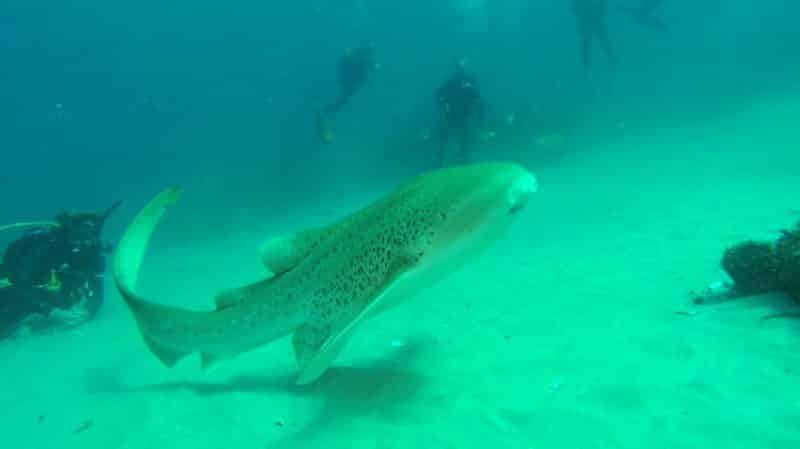
Octopus
The octopus was quite a find as they are often shy and hard to spot.
What made this encounter extraordinary was that the octopus was actively foraging in bright daylight.
I had a close encounter of the tactile kind when one of its exploratory tentacles made contact with my fingers.
I’m sure it must have thought I was an alien marine creature of sorts, as it made a quick retreat.
Wobbegong or Carpet shark
We spotted a well-camouflaged wobbegong (or carpet shark) sheltering from the current in a rocky hollow.
Wobbegongs blend in well with temperate reef habitats.
Wobbegongs are nocturnal.
On daytime dives they are usually resting, docile and easy to approach.
Because of their harmless appearance, they cause a high number of undocumented shark bites to snorkelers and divers as they are often grabbed by their tails.
When grabbed by their tail, they are capable of turning on half their body length and can easily grab you with a mouthful of needle-sharp, slippery teeth.
My advice is to keep your distance.
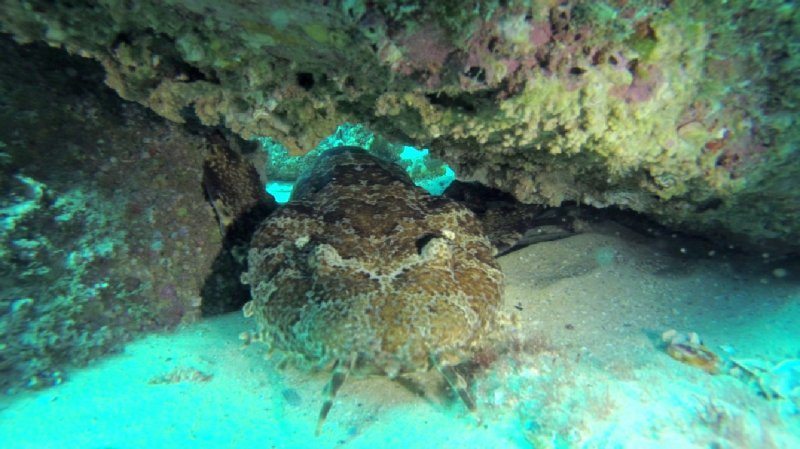
Bull rays
Bull rays can glide with ocean currents but they often hide on the ocean bed beneath the sand.
A fan-tailed bull ray (commonly known as a stingray) was responsible for the death of Steve Irwin.
Fan-tailed bull rays are approachable, confident and trusting.
But they are also pre-programmed to gut or slash the jaws of large predatory sharks with their venomous barb that’s protected by a fleshy sheath halfway along the tail.
Approaching them from above is not recommended.
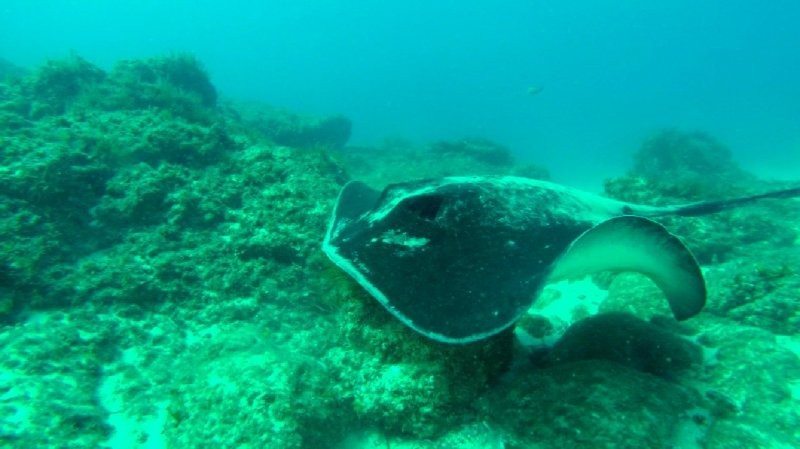
Shovelnosed rays
Shovelnosed rays are shark-like in appearance and have two erect dorsal fins and an equally well-proportioned tail. They pose less of a threat than wobbegongs or bull rays to divers.
Green turtles
The best experience occurred near the end of our dive.
As we were heading back to the safety stop, we spotted a juvenile green turtle. Juveniles are usually shy and prefer to stay away from divers.
This little greenie seemed to be quite the dude and curious.
The turtle beckoned us to follow it to a favourite spot, where it seemed to be rubbing its shell beneath a rock shelf to relieve an itch.
I decided to assist by giving it a vigorous back rub and shell clean.
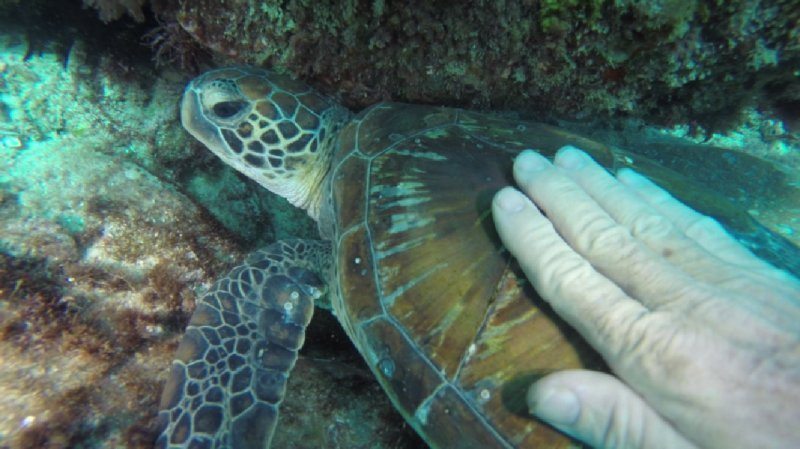
I thought I had finished but clearly, the turtle had other ideas.
It came out from under the rock shelf and moved from side to side to get me to scratch the rest of its shell.
It followed us for a while and when we were done, it was cheeky enough to approach another diver.
Best time to go Stradbroke Island Diving
This is a seasonal dive site.
Manta rays visit in the warmer months and Easter marks the end of the season.
Grey nurse sharks begin to arrive around April and can be found here throughout winter.
This area is a transition zone bathed by the warm East Australian current and the tropical species that ride it south and the temperate currents associated with species like the old wife fish and blue gropers.
More Queensland diving and snorkelling
- The SS Yongala wreck is an amazing dive
- Lady Musgrave Island is a great spot for diving and snorkelling
- Lady Elliot Island has plenty of turtles
Plan Your Trip

Rent A Car – Find the best car rental rates at Discover Cars. They compare car hire companies to provide you with the best deal right now.

Find A Hotel – If you’re curious about this article and are looking for somewhere to stay, take a look at these amazing hotels.
